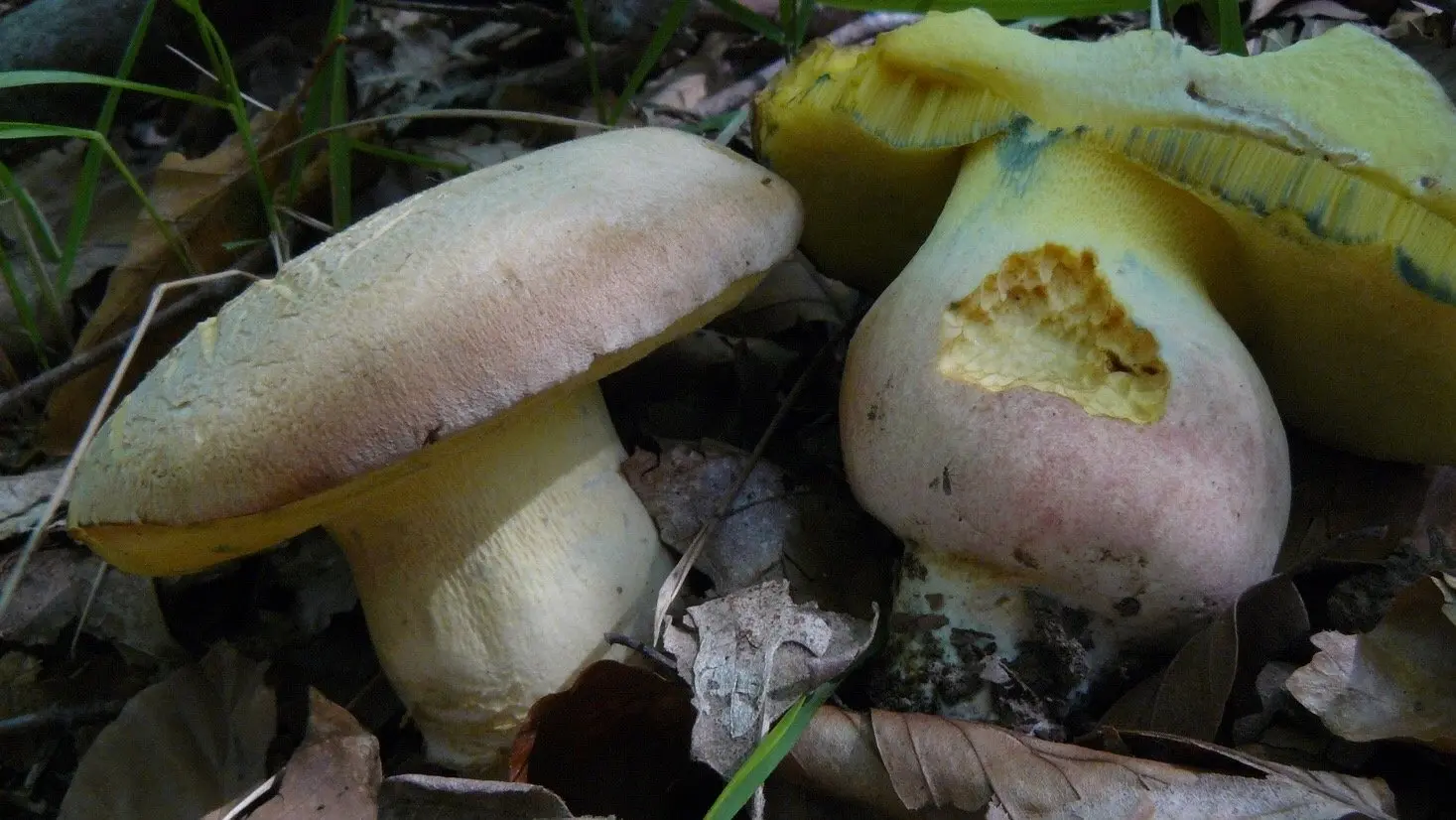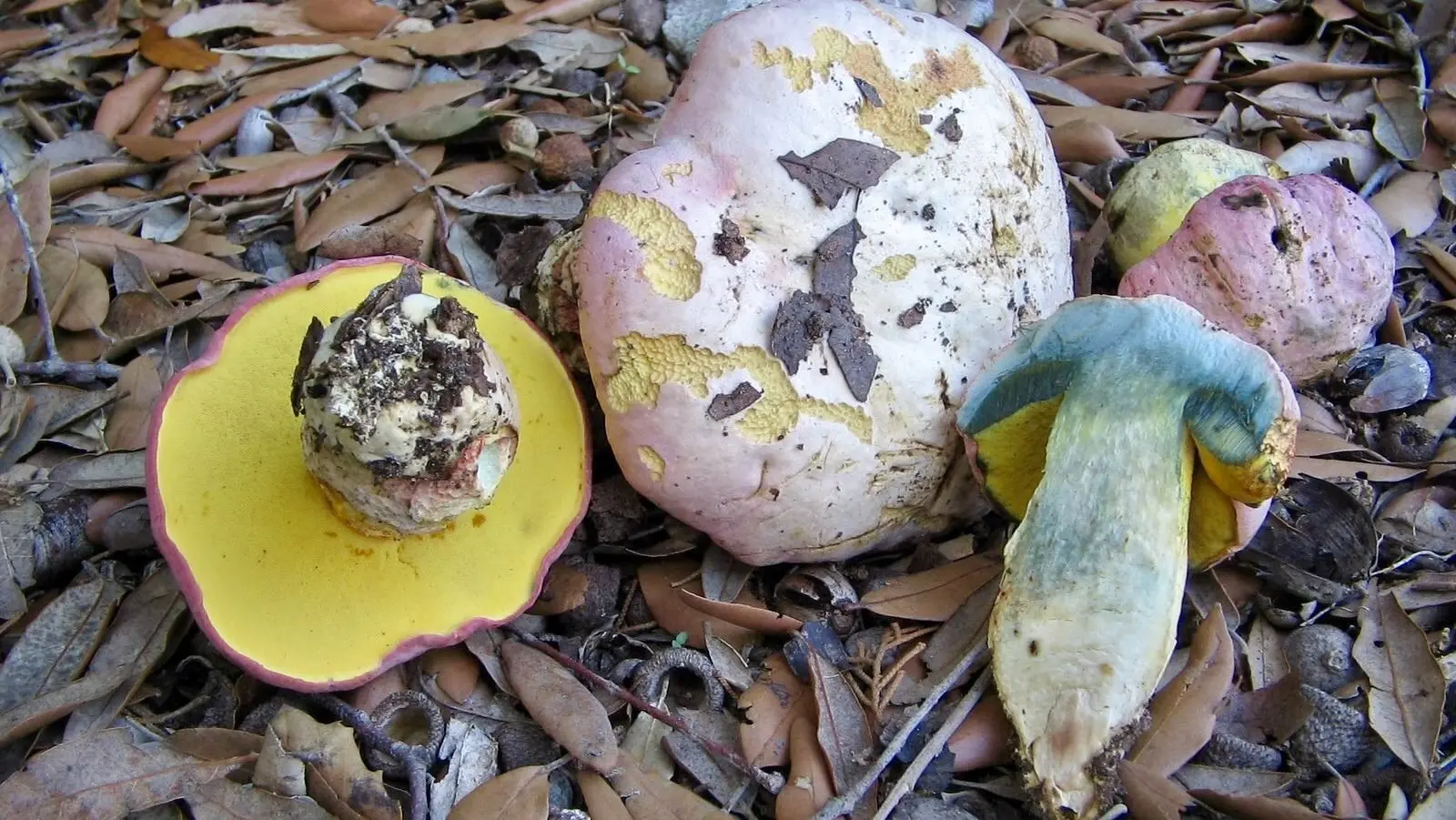Beautifully colored boletus (Suillellus pulchrotinctus)
- Division: Basidiomycota (Basidiomycetes)
- Subdivision: Agaricomycotina (Agaricomycetes)
- Class: Agaricomycetes (Agaricomycetes)
- Subclass: Agaricomycetidae (Agaricomycetes)
- Order: Boletales (Boletales)
- Family: Boletaceae (Boletaceae)
- Genus: Suillellus (Suillellus)
- Type: Suillellus pulchrotinctus (beautifully colored boletus)
- Bolet beautifully colored
- Beautifully dyed mushroom
- Beautifully dyed red mushroom

Hat: from 6 to 15 cm in diameter, although it may exceed these dimensions, hemispherical at first, gradually flattening as the fungus grows. The skin is firmly attached to the flesh and is difficult to separate, slightly hairy in young specimens and smoother in mature ones. The color varies from cream, paler towards the center, to the pink tints characteristic of this species, very noticeable towards the edge of the cap.
Hymenophore: thin tubules up to 25 mm long, adherent in young mushrooms and semi-free in the most mature ones, easily separated from the pulp, from yellow to olive green. When touched, they turn blue. The pores are small, initially rounded, deform with age, yellow, with orange hues towards the center. When rubbed, they turn blue in the same way as the tubes.
Leg: 5-12 x 3-5 cm thick and hard. In young specimens, it is short and thick, later becoming longer and thinner. Tapers downward at the base. It has the same tones as the hat (more yellowish in less mature specimens), with the same pink undertones, usually in the middle zone, although this can vary. On the surface it has a fine, narrow grid that extends to at least the upper two-thirds.
Pulp: hard and compact, which distinguishes this species by a significant proportion in relation to other species of the same genus, even in adult specimens. In transparent yellow or cream colors that change to light blue when cut, especially near the tubes. The youngest specimens have a fruity smell that becomes more and more unpleasant as the fungus grows.

It mainly establishes mycorrhiza with beeches that grow on calcareous soils, especially with Portuguese oak in the southern regions ( ), although it is also associated with sessile oak ( ) and pedunculate oak ( ), which prefer siliceous soils. It grows from late summer to late autumn. Thermophilic species, associated with warm regions, especially common in the Mediterranean.
Poisonous when raw. Edible, low-medium quality after boiling or drying. Unpopular for consumption due to its rarity and toxicity.
Due to the described properties, it is difficult to confuse it with other species. Only shows a more pronounced resemblance due to pink tones that appear on the stem, but are absent on the hat. It can still be similar in color to, but it has orange-red pores and there is no mesh on the leg.









